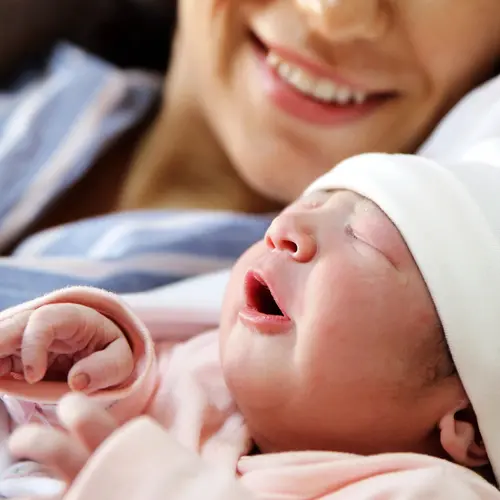It’s exciting to see your baby or toddler hit new milestones and become more independent. Some milestones, like climbing, can bring extra concerns about how to keep your child safe. If your baby starts to climb in their crib, or if they’ve successfully climbed out of it, it’s crucial that you make adjustments as soon as possible to prevent injuries from falls or other hazards.
When Do Babies Start to Climb in Their Cribs?
As babies learn to climb, they may try to escape their cribs at night or during naps. This behavior commonly begins when babies cross over into the toddler stage, although some may be capable of getting out of their cribs at just 10 or 11 months, when they learn to pull on objects to stand.
5 Ways to Keep Your Child Safe
Lower the crib mattress. The simplest option to keep your baby from climbing out of their crib is to lower their mattress as much as possible. This approach may not provide a permanent solution, but it could buy you a few months of peace at night.
Even if your baby is not yet climbing out of the crib, it’s important to lower the mattress as soon as pulling up to a stand becomes easy. Some parents go a step further and lower crib mattresses once their babies begin sitting on their own, as standing typically occurs soon after.
Try a sleep sack. Sleep sacks provide comfort to young children, similar to swaddles. A sleep sack may restrict your child’s limbs just enough to make climbing out of the crib difficult, but your child may also find their way out of an ordinary sleep sack.
If that’s the case, it may be worth trying to put the sleep sack on backwards, to make the zipper more inaccessible. There are also many models of sleep sacks that place the zipper in harder to reach places, such as near the bottom.
Switch to a toddler bed. If your child is consistently climbing out of the crib, a toddler bed may be safer. The National Center on Early Childhood Quality Assurance recommends that child care providers have toddlers stop using cribs when they can climb out or when they are 35 inches tall.
Designed for children under the age of 3, toddler beds may provide a middle ground between a crib and twin bed. This strategically designed bed is not fully enclosed, but rather, includes guard rails meant to prevent toddlers from accidentally rolling out.
Adjustable cribs that can become toddler beds are ideal, as they help children grow more comfortable with evolving sleep arrangements. Avoid making the switch too early, as a growing body of research suggests that this can cause issues with sleep.
Make sure the room is childproofed. How you arrange furniture can determine whether your baby is able to climb out of their crib. If one side of the crib is shorter than the other, be sure the shorter side is positioned against a wall. Also, if there is furniture nearby the crib, move it away so it can’t be used to help get out of the crib.
Since your baby is climbing, it’s important to double check that the room is properly childproofed in the event that your baby does get out of their crib. Baby and toddler-proofing essentials include:
- Bolting all heavy furniture to the wall so they’re impossible to pull down
- Securing cords on blinds or long drapes
- Securing or removing all electrical cords
- Covering electrical sockets
- Installing window guards
- Replacing free-standing lamps with overhead lighting
- Adding finger pinch guards to doors
Avoid crib tents. At first glance, crib tents or other coverings seem like an effective solution to the issue of escaping babies and toddlers. In reality, however, these accessories are dangerous. A variety of manufacturers have voluntarily recalled existing tents and stopped selling new ones in response to dozens of reports of product failures.
The U.S. Consumer Product Safety Commission warns that all crib tents are dangerous—not just those that have already been recalled. Chief concerns include the possibility of entrapment and strangulation.


